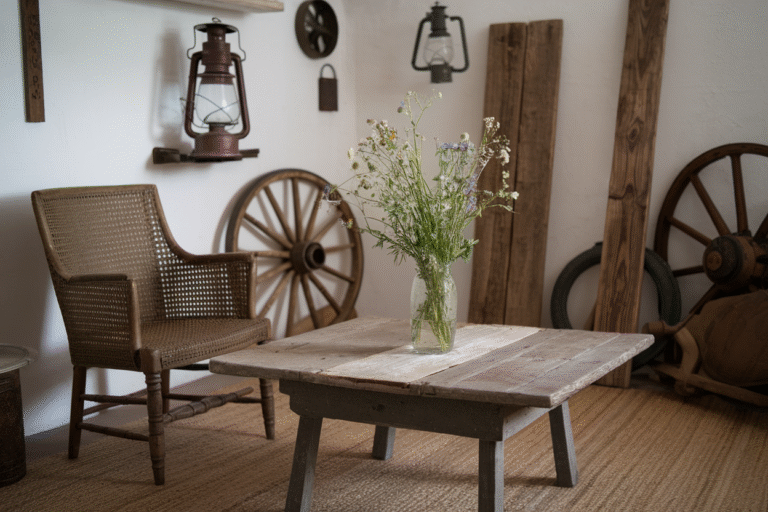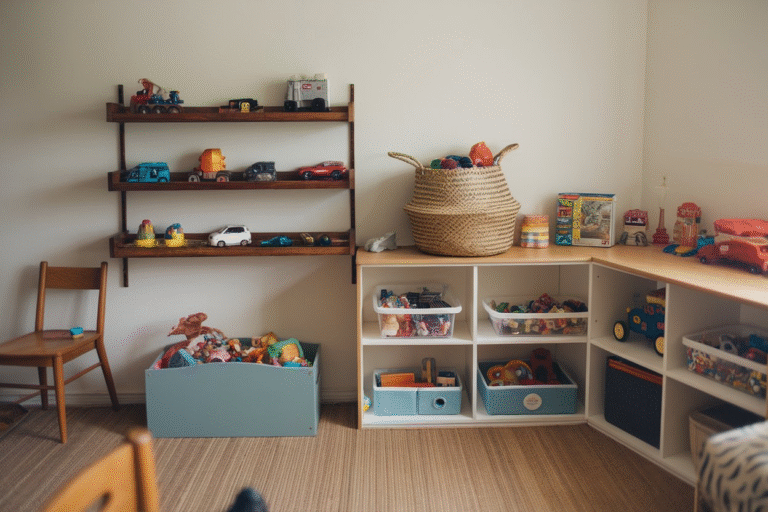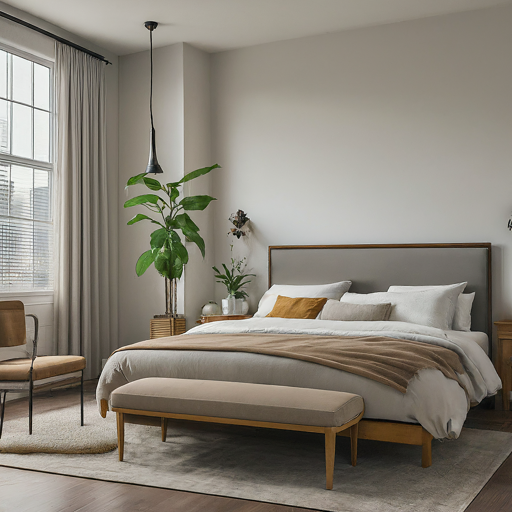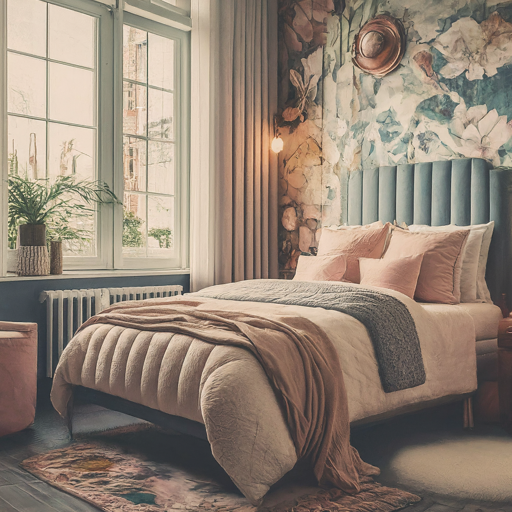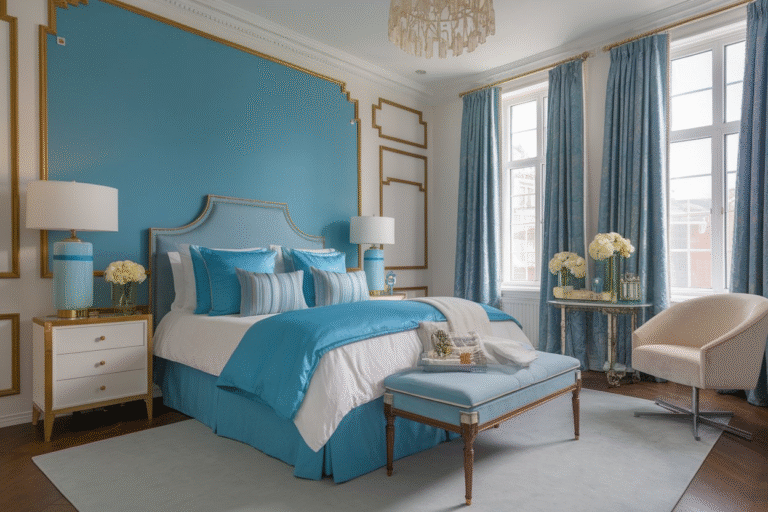22 Cozy Traditional Living Room Ideas
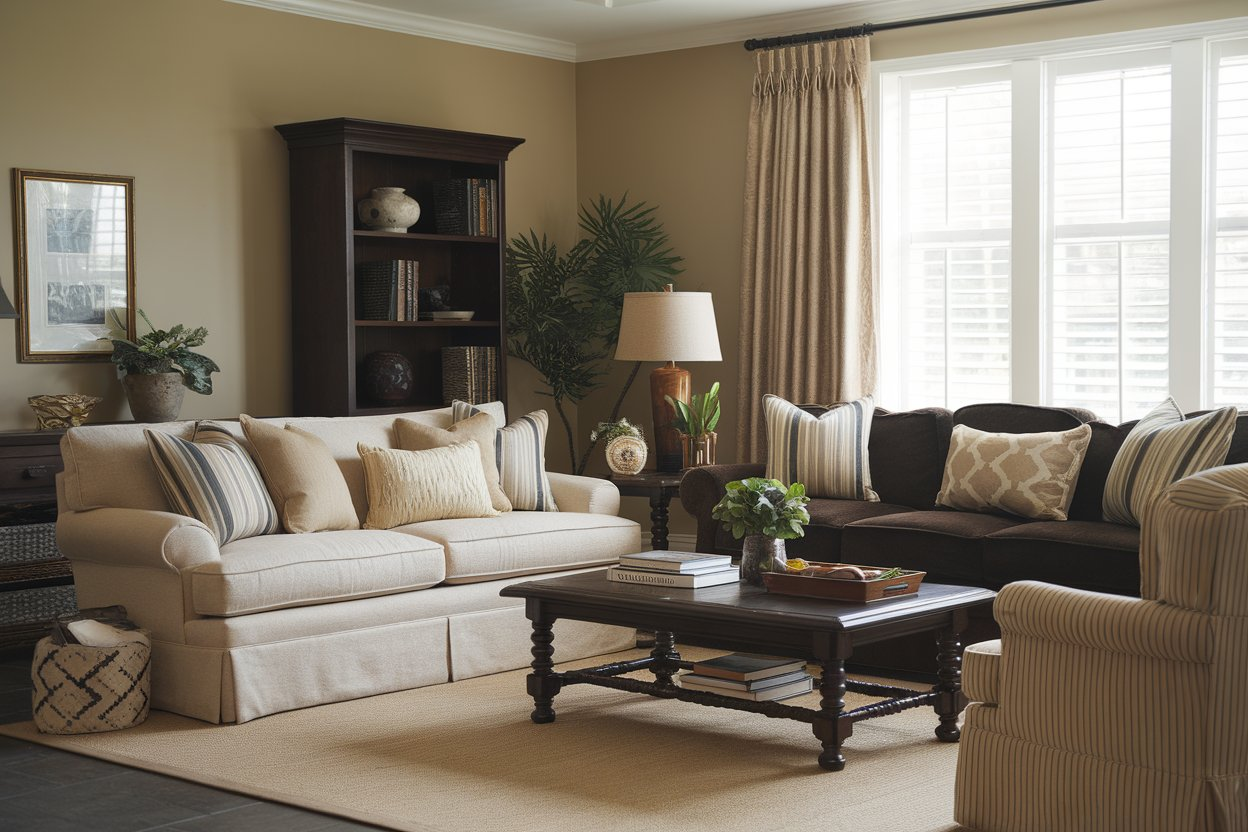
Your living room should feel like a warm hug. A place where time slows down, the tea never goes cold, and the hum of life outside fades away.
That’s the magic of traditional living rooms—they aren’t chasing trends; they’re steeped in timeless charm, built to comfort and calm.
If you’ve ever stepped into a room and felt an inexplicable sense of peace, chances are it had some traditional touches.
1. Embrace Rich, Warm Color Palettes
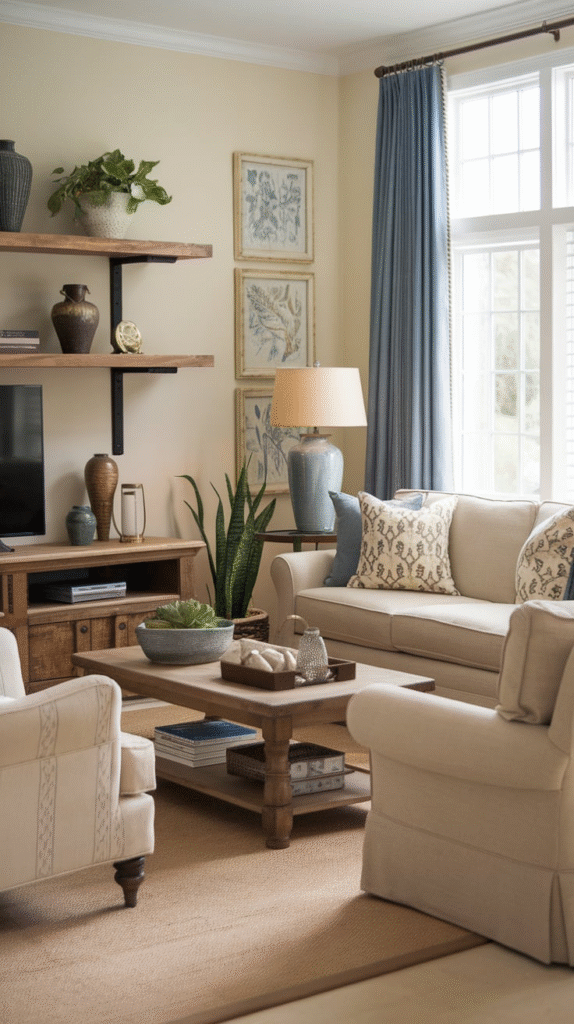
Color sets the tone for coziness. Traditional living rooms thrive on deep, warm tones—think burnt sienna, forest green, navy blue, and rich chocolate browns. These shades don’t scream for attention. They whisper comfort and familiarity. Pair them with ivory or cream trims to lighten the mood without losing the warmth.
I once painted my tiny lounge a dusty cranberry red. Everyone told me it would make the room look smaller. Instead, it felt like I’d been wrapped in a velvet robe every time I walked in.
2. Choose Classic Furniture Shapes
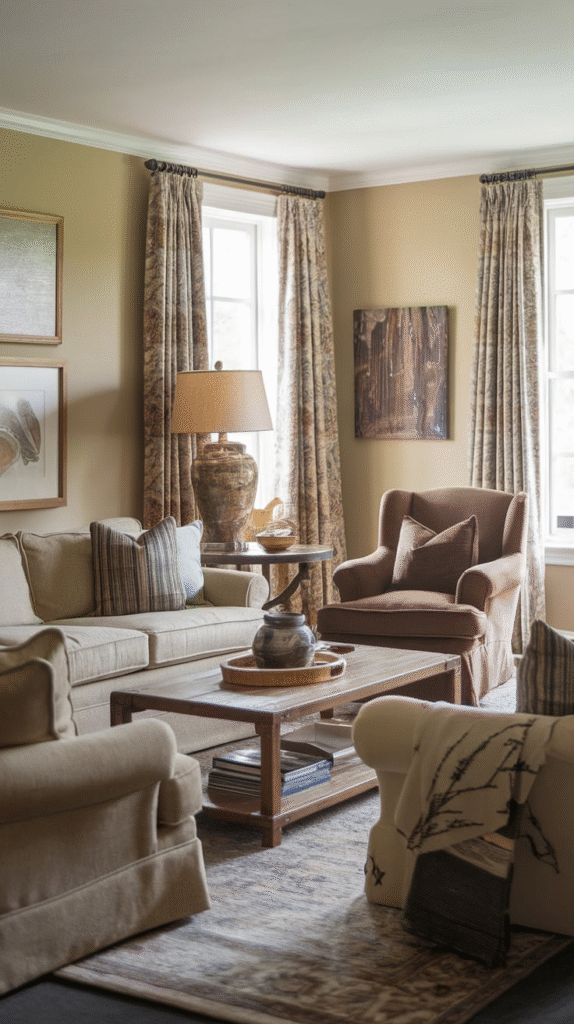
Forget sharp lines and boxy modern silhouettes. The traditional living room dances to the rhythm of rolled arms, carved wood legs, tufted cushions, and wingback chairs. These shapes are soft, inviting, and speak of storytelling and fireside chats.
A well-worn Chesterfield sofa or a floral-patterned armchair passed down from grandma adds more personality than anything from a showroom catalog.
3. Layer in Textiles for Instant Warmth
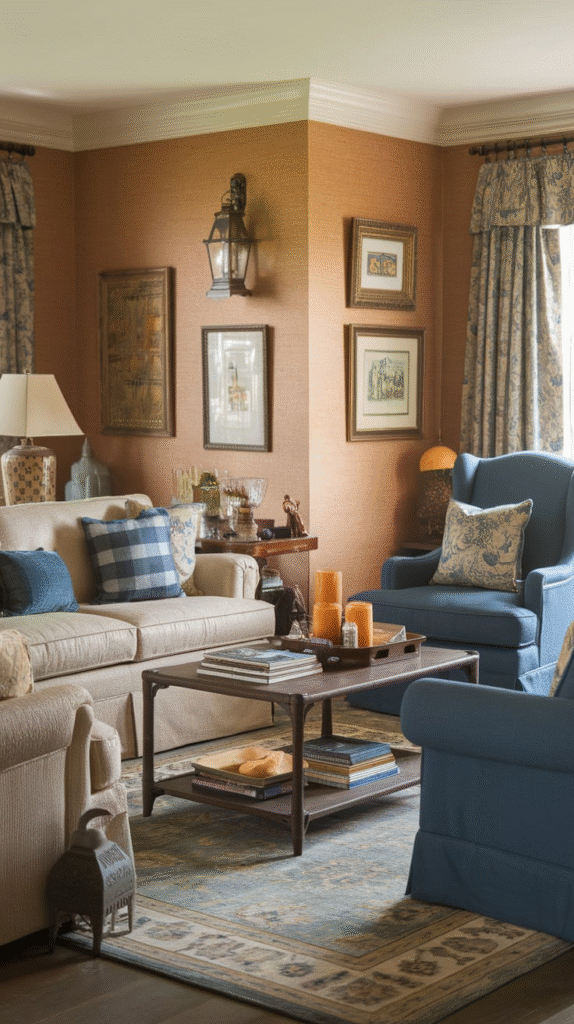
Plaid throws, damask curtains, velvet cushions, and Persian rugs aren’t just decorative—they’re part of the storytelling. Textiles in a traditional living room don’t just fill space. They invite touch, retain warmth, and create visual softness.
Layering is key. Drape a woolen throw over the sofa. Place a fringed rug over a hardwood floor. Stack cushions like you’re preparing for a cozy storm.
4. Incorporate Dark Wood Accents
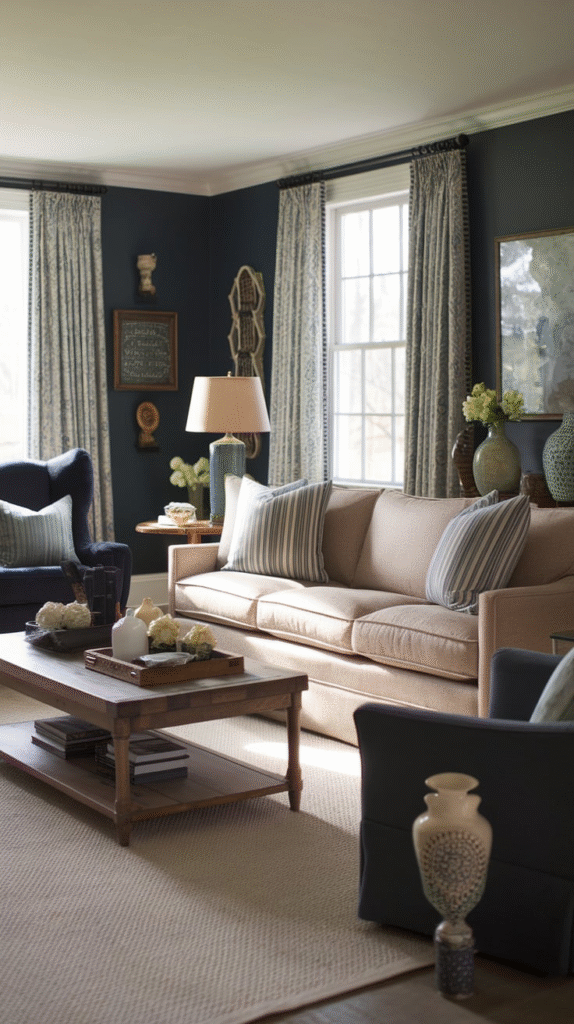
Mahogany, walnut, and cherry woods carry a timeless gravitas. A traditional space thrives on their richness and grounding quality. Consider a carved coffee table, antique sideboard, or bookshelves that tell stories just by standing there.
There’s something grounding about furniture that feels like it’s been through life with you. Each scratch and dent adds character.
5. Highlight Architectural Details
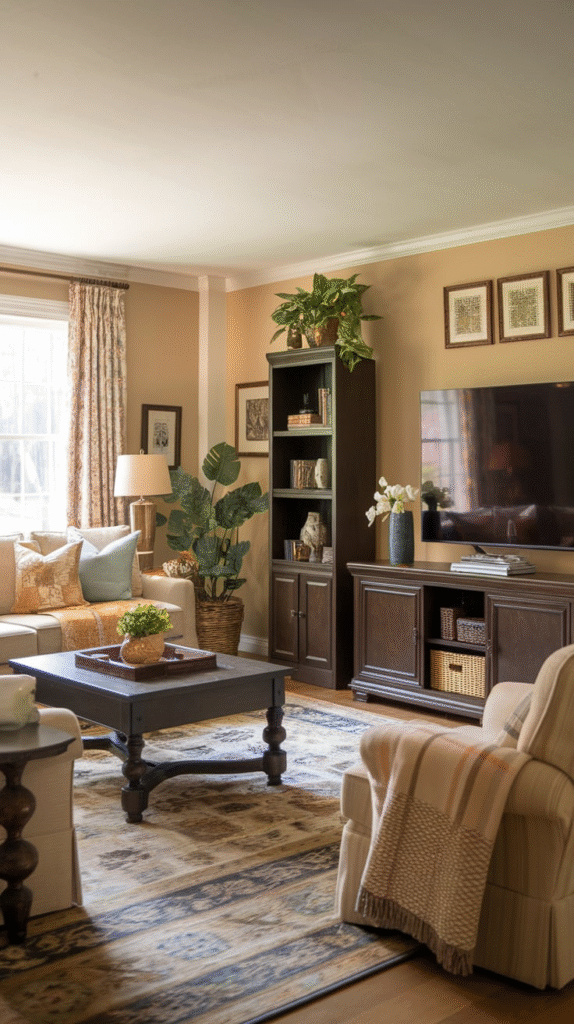
If you’re lucky enough to have them, crown molding, wainscoting, and ceiling medallions are your room’s jewelry. Highlight them with contrasting paint or simply keep them clean and visible.
If your space lacks these features, consider adding faux architectural elements—they work like a good vintage frame on a classic painting.
6. Use a Statement Fireplace as the Focal Point
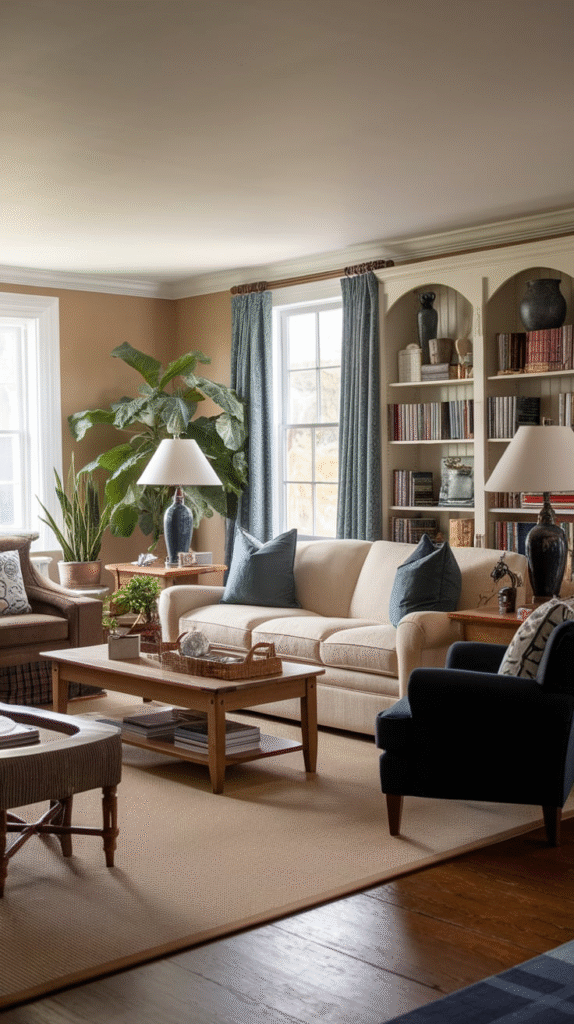
In traditional homes, the fireplace isn’t just for warmth—it’s the heart of the room. Whether wood-burning, gas, or even electric, frame it with stone, brick, or wood, and dress the mantle with candles, mirrors, and antique clocks.
Growing up, my parents’ living room had a modest brick fireplace with a creaky wooden mantel. It wasn’t Pinterest-perfect, but come winter, it became the center of our lives. Conversations, reading, quiet—everything happened there.
7. Add Built-In Bookshelves
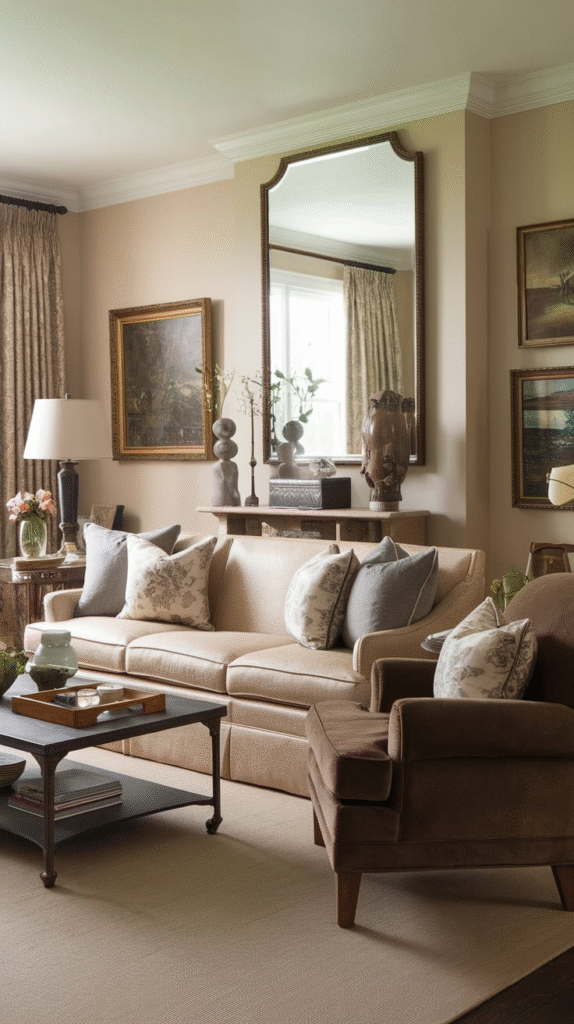
Nothing whispers “cozy tradition” quite like walls of books. Built-ins frame your living room in intellect and intimacy. They display more than books—family photos, collected trinkets, heirlooms all find a home there.
If you can’t build them in, tall freestanding bookshelves still do the job. Just keep them symmetrical for that classic balance.
8. Incorporate Antique or Vintage Finds
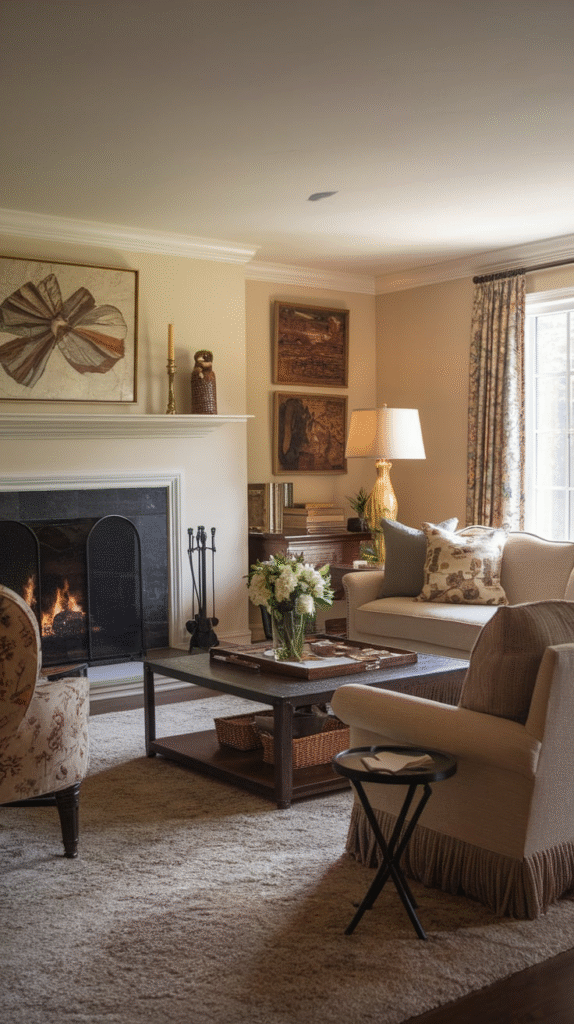
Mixing in antiques or vintage treasures adds soul. A baroque mirror, vintage clock, or old oil painting brings layers of story into your space. These pieces don’t just decorate—they evoke memory, even if they’re not yours.
Visit a flea market with an open heart. One person’s discarded frame might be your room’s crown jewel.
9. Keep the Lighting Soft and Layered
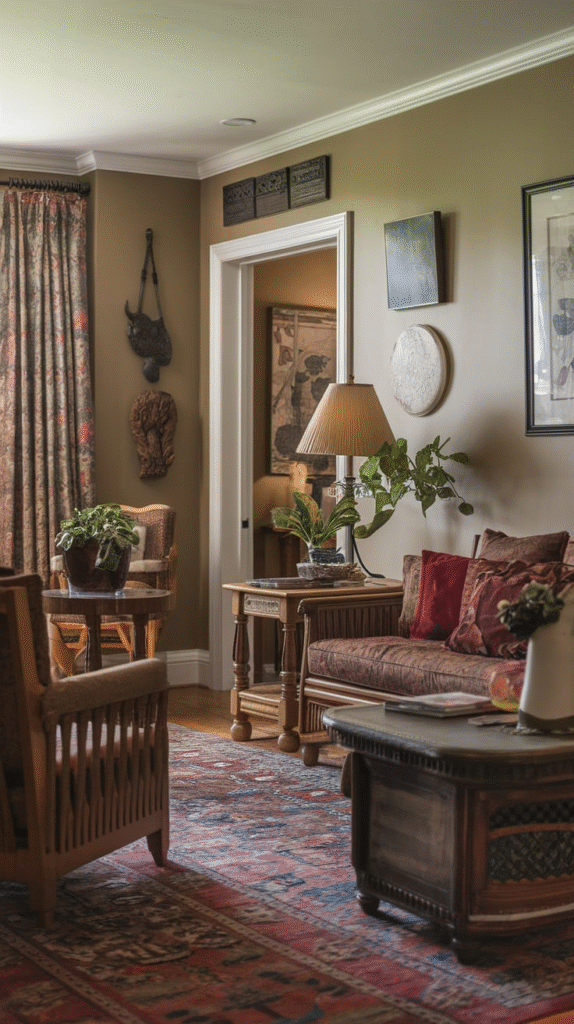
Overhead lights are functional, but in a traditional space, lamps are the secret sauce. Add table lamps with pleated or fabric shades, a floor lamp in a reading nook, and wall sconces for extra character. Warm white bulbs (not harsh daylight LEDs) will instantly turn your room from cold to cozy.
10. Mix Patterns for a Lived-In Look
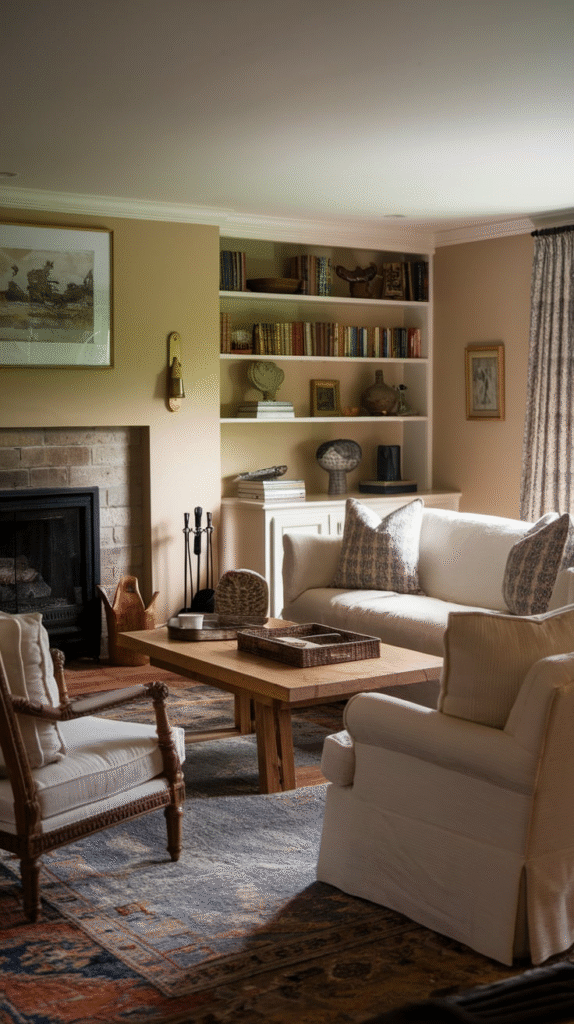
Tradition doesn’t mean monotone. Mix florals, stripes, checks, and toiles to create depth and comfort. The key is to stay within a harmonious color palette, so it feels collected, not chaotic.
If your rug is patterned, choose solid curtains. If your cushions are floral, try a striped throw. It’s a dance—one element leads, the others follow.
11. Include a Large Area Rug
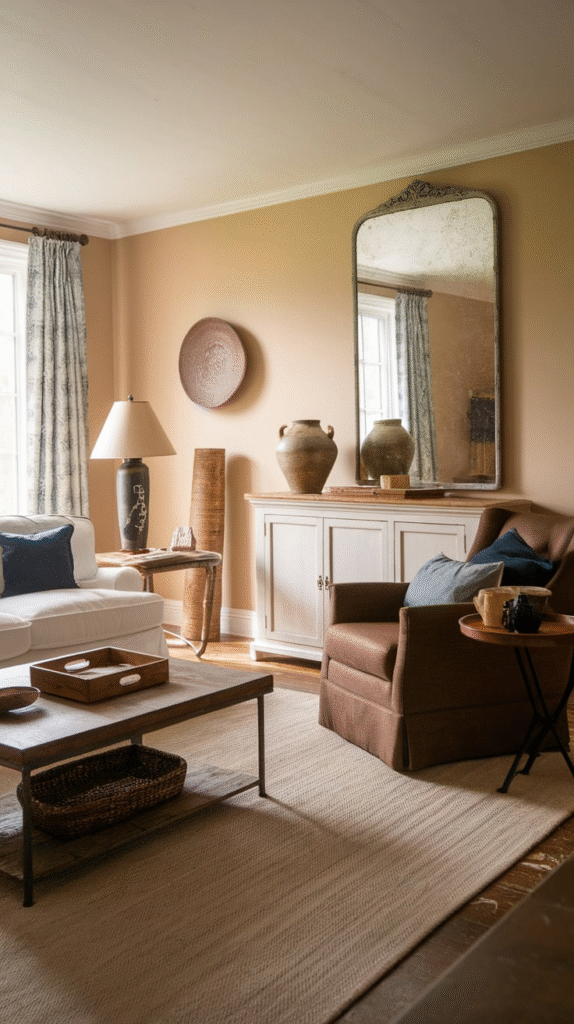
Rugs anchor the room—especially in traditional design. Whether it’s a hand-knotted Persian, a vintage wool runner, or a floral area rug, it defines the space and adds essential warmth underfoot.
Rugs also help with acoustics. A thick rug makes conversations feel more private, like the walls themselves are leaning in to listen.
12. Add Drapes with Personality
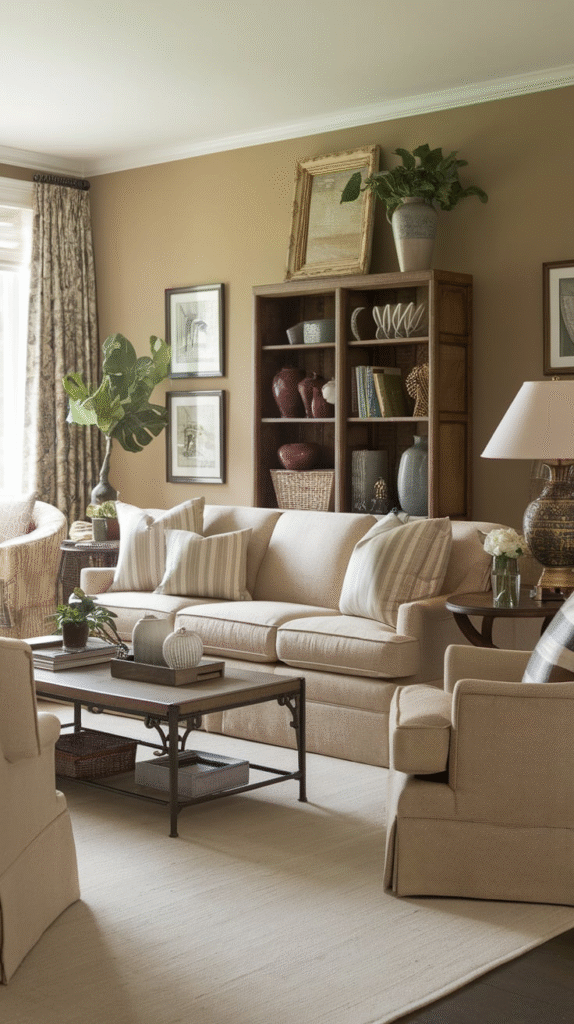
Heavy, full-length drapes are non-negotiable in a traditional cozy room. Skip the blinds. Choose velvet, brocade, or damask fabrics in rich tones. Hang them wide and tall to create the illusion of bigger windows and softer light.
Bonus tip: line your curtains with thermal backing in colder months. They’ll keep the chill out and add heft to the design.
13. Display Art with Classic Frames
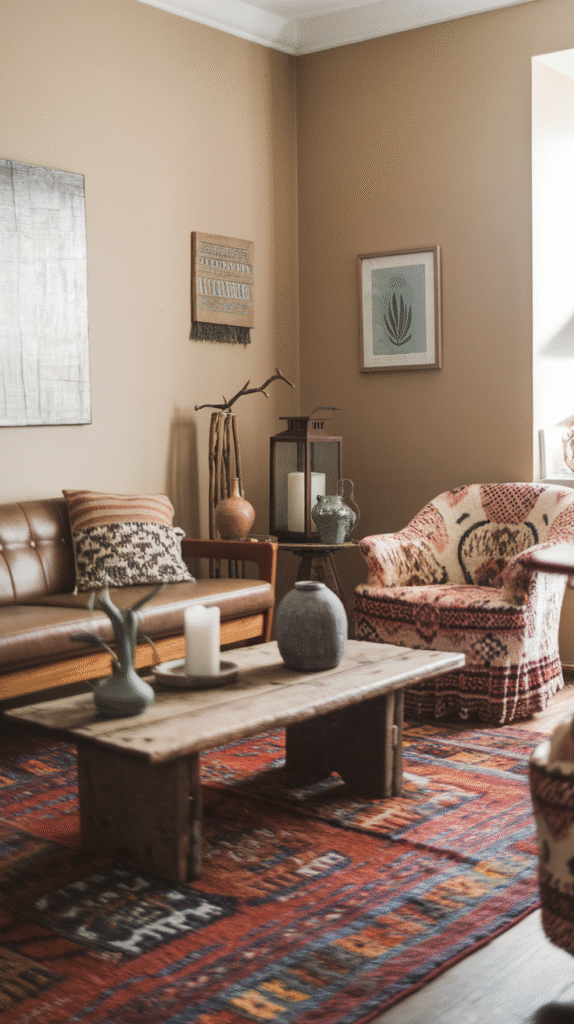
Art should feel collected, not curated. Look for landscapes, portraits, or still lifes, preferably in ornate, gilded, or wood frames. A gallery wall of mismatched antique finds tells a more interesting story than a set of mass-produced prints.
Hang at eye level. Art in a traditional room should feel like part of the furniture, not floating in isolation.
14. Incorporate a Traditional Coffee Table Setup
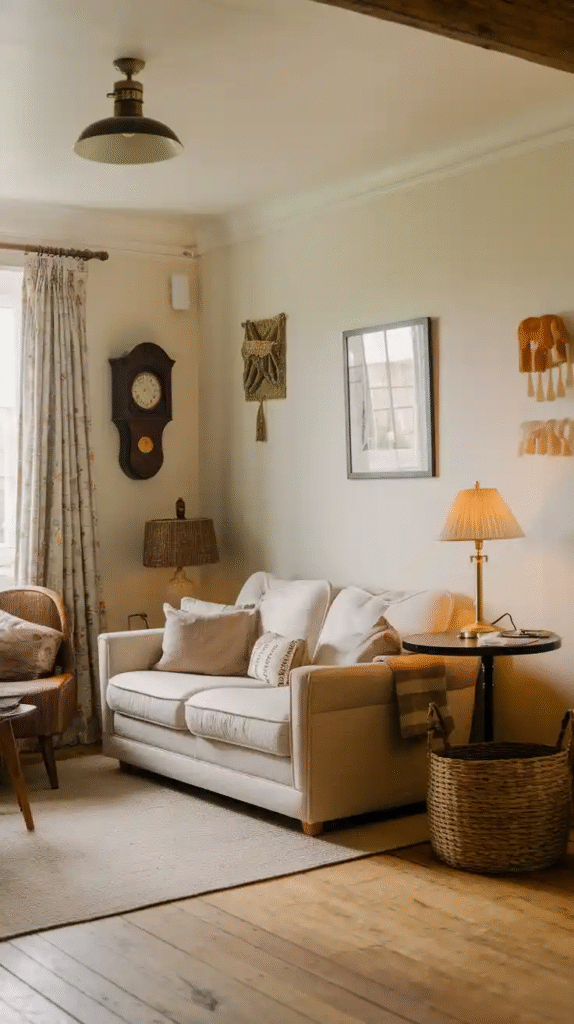
The coffee table isn’t just for cups—it’s your room’s centerpiece. Style it with a stack of books, a small vase, a tray with coasters, and maybe a small antique sculpture. Keep it functional but thoughtful.
I always keep a copy of my favorite short stories and a tiny brass candlestick on mine. It sparks both conversation and nostalgia.
15. Use Symmetry to Anchor the Room
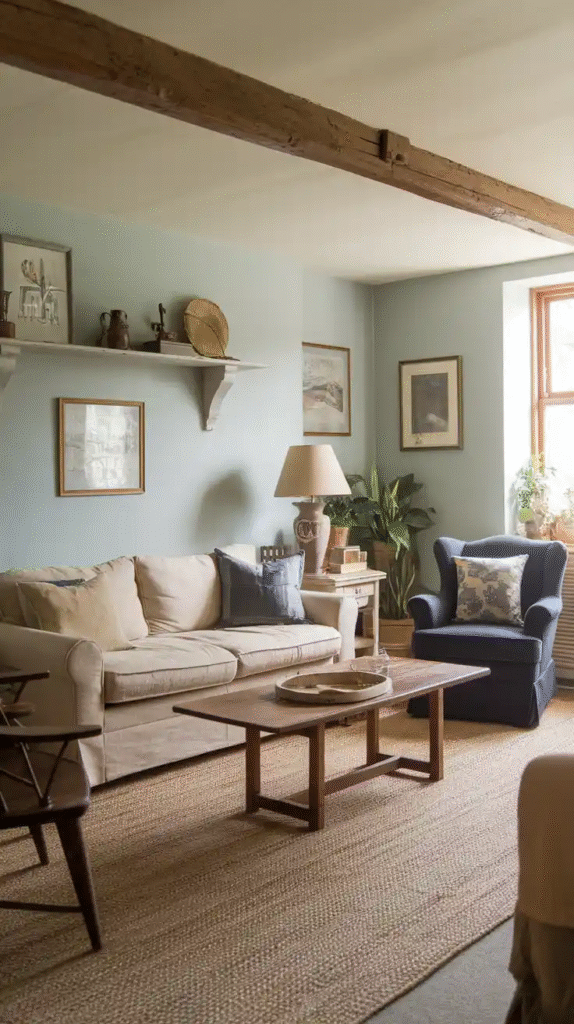
Traditional rooms love order and balance. Frame your fireplace with matching chairs. Flank a sofa with identical side tables and lamps. Symmetry adds structure to softness, like a good plotline beneath a romantic novel.
It doesn’t need to be rigid, just suggestive. Even imperfect pairs lend a satisfying sense of visual calm.
16. Bring in Natural Elements
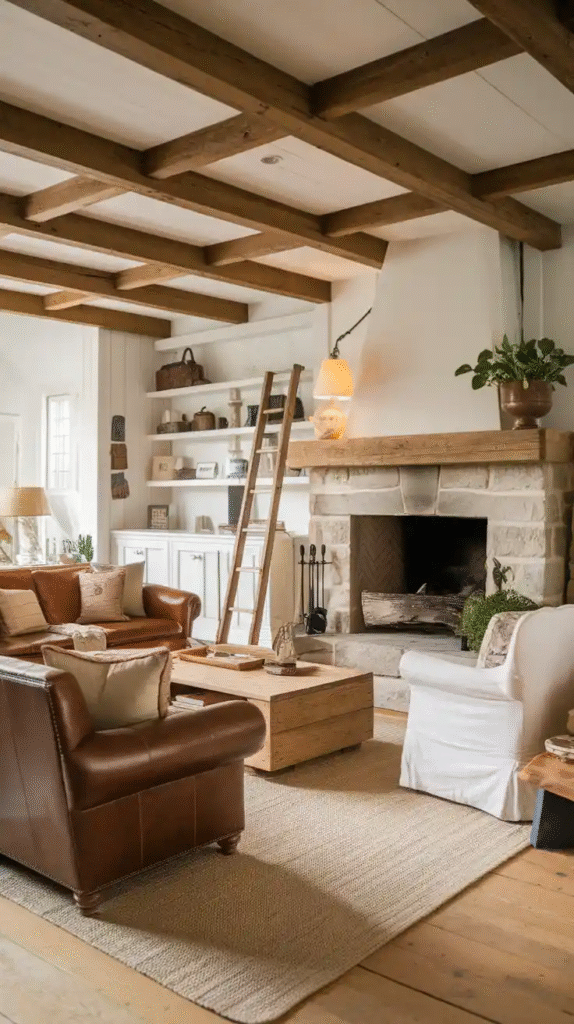
Fresh flowers, dried branches, pinecones, or even a bowl of apples can add organic softness. These elements break up the formality with a bit of rustic soul.
Seasonal switches work beautifully. Hydrangeas in summer, pumpkins in fall, eucalyptus in winter—it keeps your traditional room alive and breathing.
17. Feature a Traditional Ceiling Fixture
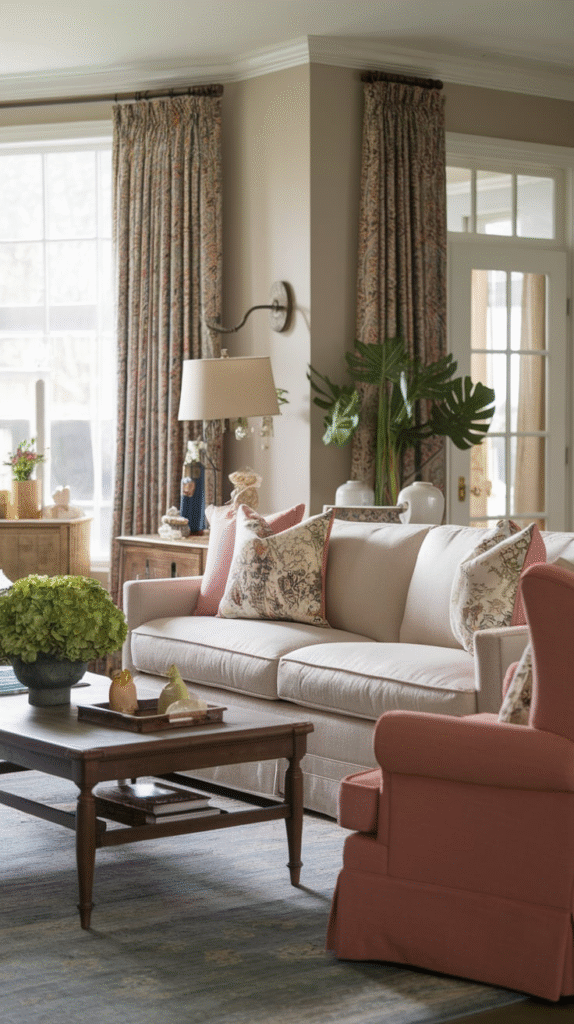
A crystal chandelier or classic drum pendant sets the tone for elegance. Choose something with aged brass, antique bronze, or iron finishes. Even in a small room, a touch of glam above creates a ceiling-high sense of drama.
Install a dimmer switch—you’ll thank yourself when evening sets in.
18. Add Personal Memorabilia
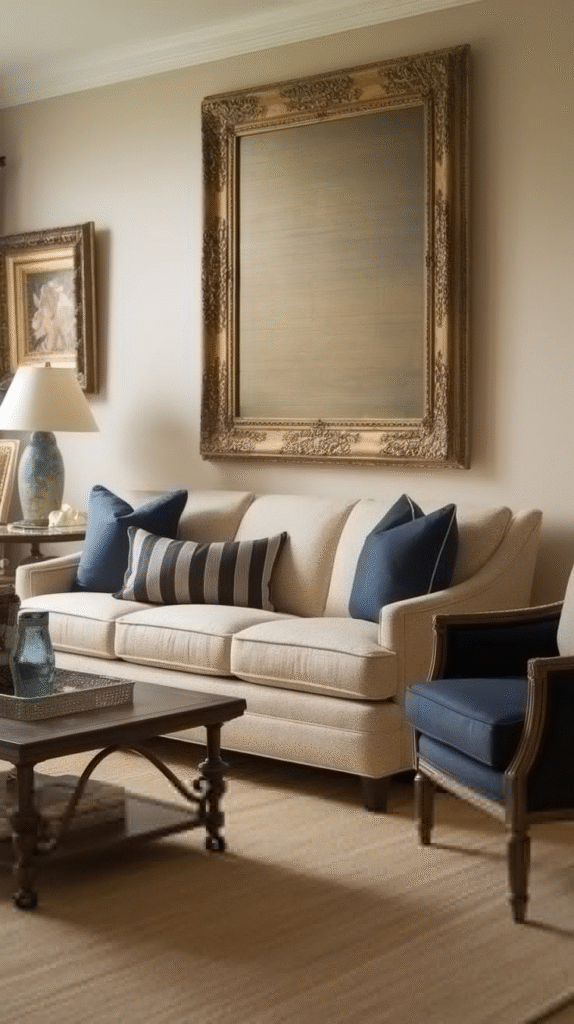
Old family photos in gold or wooden frames, your grandfather’s chessboard, a map from your honeymoon—these things make your room yours, not a showroom replica.
Place them on the mantel, a shelf, or grouped on the wall. Tradition is rooted in personal history. Show yours proudly.
19. Feature a Piano or Statement Cabinet
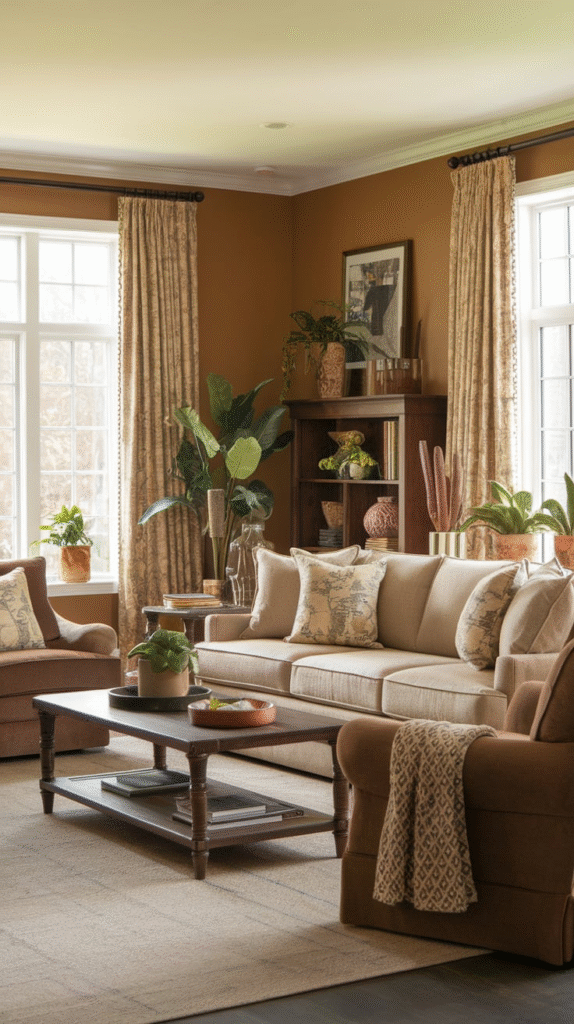
If you have the space, a upright piano, hutch, or china cabinet brings serious old-world charm. Even if you don’t play, the presence of a piano brings a sense of culture and quiet elegance.
A well-aged cabinet with glass doors is perfect for displaying vintage books, ceramics, or even linen napkins.
20. Incorporate Classic Accessories
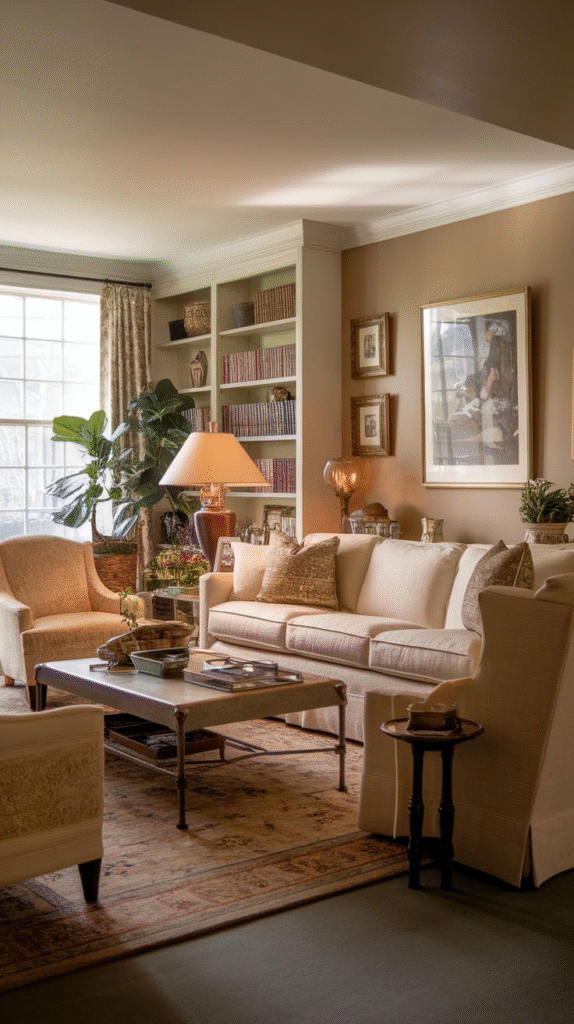
Fill in the details with candlesticks, porcelain figurines, woven baskets, brass trays, or lace doilies if that’s your thing. Each item should feel like it has a story—even if you make it up.
A brass candlestick I found at a garage sale has become my favorite thing to light on rainy evenings. It casts shadows that make my bookshelves feel alive.
21. Create a Reading Nook
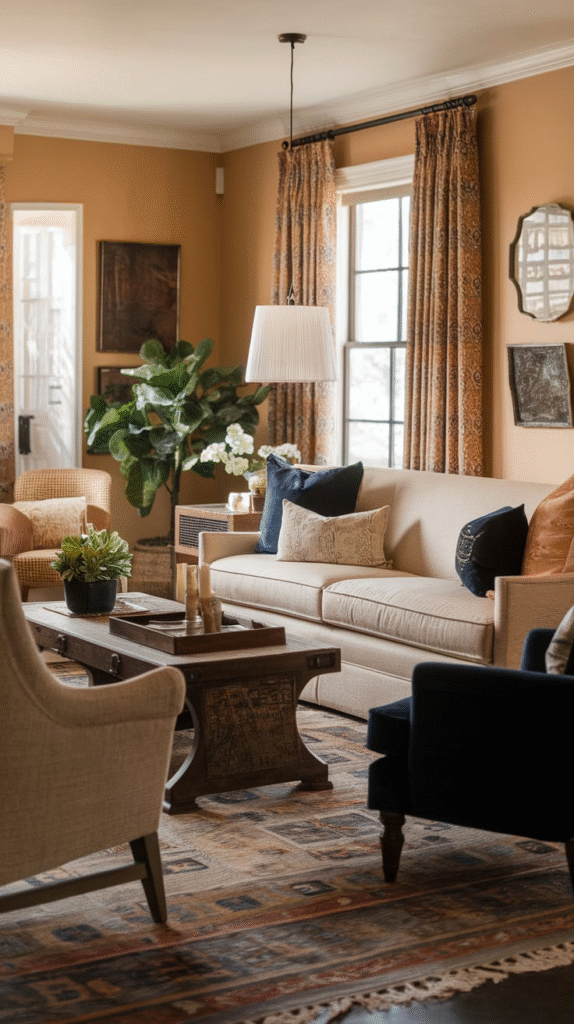
Carve out a corner with a high-back chair, side table, and reading lamp. Add a basket for throws, a small rug, and maybe a wall shelf for books.
This is your sanctuary within a sanctuary. It’s where the room takes a breath and invites you to sit down and stay awhile.
22. Trust Your Gut—Not the Trends
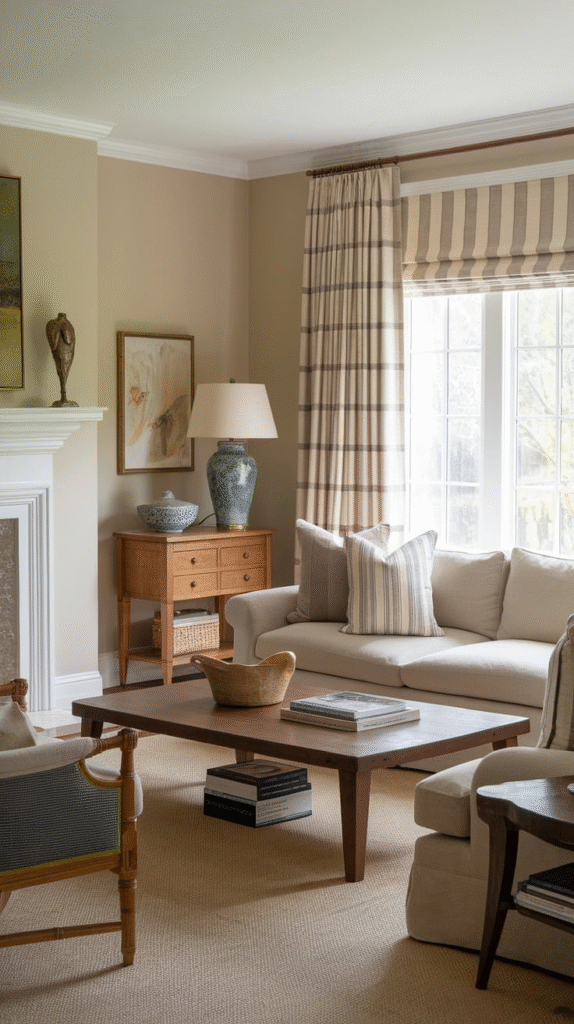
The most important part of a cozy traditional living room? It should feel like home. Don’t chase Pinterest-perfect images or rules set by designers who never set foot in your space.
Conclusion
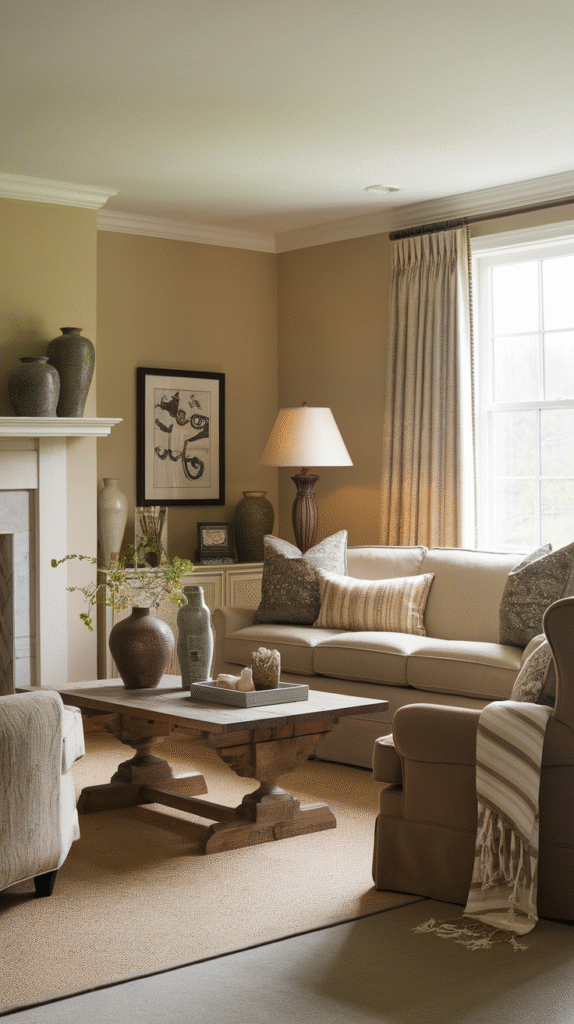
Surround yourself with what you love. Add what makes you feel warm, nostalgic, rooted. Because tradition is nothing more than memory made visible—and your memories matter most.

